Nan-t’ou County, Taiwan – Friday, May 13th, 2011
“For some reason a lot of westerners get lost on their way here, but it’s easy for Taiwanese people to find,” my hostel host warned me as he jotted down some simple walking directions to the bus service to Sun Moon Lake. I rolled my eyes. “Of course, I’m not gonna be like those white people. These directions seemed super easy, there’s no way me, in all my navigational brilliance, will ever get lost.”
I got lost.
Almost immediately, too. I thought I only had to go down to the second intersection and hook a left, but very quickly I realized I had no idea which intersections that meant, or that the street names didn’t correspond with what were written down on my notes. It didn’t help that the streets weren’t actually aligned in the grid-like pattern the crude hand-drawn map suggested. Soon, not only could I not find the travel service, but I didn’t even know how to get back to my hostel. I wandered for the better part of an hour, a few times asking for help from English-speaking passersby, only for them to be as befuddled by my directions as I was. At least I learned a lesson: if you’re a lousy direction-giver, a good way to absolve yourself of blame is to invoke the direction-seeker’s white guilt for the reason they inevitably become lost. (That, or don’t blithely assume nothing could possibly go wrong when you’re given clear warning signals first thing in the morning of Friday the 13th.)
Just as I was really ready to concede the entire day defeated, I turned to look at the storefront next to me and realized it was advertising shuttles to Sun Moon Lake. Was this the tour company I was originally looking for? Couldn’t say. But sure enough, they had another shuttle scheduled to depart in about a half hour, with seats available. I paid my fare, and was on my way to a slightly foreshortened day at Sun Moon Lake, home of Taiwan’s famed theme park Formosan Aboriginal Culture Village. Located in the mountainous interior of Taiwan, Sun Moon Lake is a popular vacation destination in Taiwan, being home to Taiwan’s largest body of water and numerous hiking trails and other tourist activities, the largest among them being the cultural theme park.
The bus dropped off just before noon at a small tourist village near the lake’s shore.
A short bus ride took me to the Sun Moon Lake Ropeway for just over a mile long trip over the mountains to the theme park entrance.
Looking back down towards Sun Moon Lake.



 And forward towards the mountainous setting of Formosan Aboriginal Culture Village.
And forward towards the mountainous setting of Formosan Aboriginal Culture Village.
At last the rides come into view.
The arrival experience was somewhat similar to Genting Highlands. Although the gondola lift wasn’t nearly as steep or dramatic, at least the manmade theme park at the top of it was much more in sync with the natural surroundings. A majority of visitors won’t even take the Ropeway, as the car park arrival is located on the opposite side of the park.


 Formosan Aboriginal Culture Village is a park with two completely different identities. As the name suggests, the original part of the park which opened in 1986 was not really a traditional theme park but more along the lines of a “living museum” cultural attraction, with several re-created villages based on various Taiwanese tribes, with live demonstrations and shows performed by members of those tribes. Also somewhat unique for an Asian theme park, the culture village side is very closely integrated with the natural topography and surrounded by mature greenery.
Formosan Aboriginal Culture Village is a park with two completely different identities. As the name suggests, the original part of the park which opened in 1986 was not really a traditional theme park but more along the lines of a “living museum” cultural attraction, with several re-created villages based on various Taiwanese tribes, with live demonstrations and shows performed by members of those tribes. Also somewhat unique for an Asian theme park, the culture village side is very closely integrated with the natural topography and surrounded by mature greenery.
The legacy of colonialism is very much a part of Taiwan’s modern identity, where today indigenous people only make up about 2.5% of the general population. The indigenous tribes of Taiwan had almost no cultural or genetic connection with mainland China for most of their history, in fact being much more closely related to Polynesians. For me this gave Formosan Aboriginal Culture Village a double layer of anthropological voyeurism, already being an outsider observing the mainstream Chinese culture, itself also in the act of curiously observing a minority indigenous culture.


 Numerous buildings are open to exploration, like this Suobao village home.
Numerous buildings are open to exploration, like this Suobao village home.


 Handcrafted sculptures and statues are also plentiful, in more ways than one.
Handcrafted sculptures and statues are also plentiful, in more ways than one.
Once in a while a theme park might install a piece of theming or graphic design without realizing the design is somewhat phallic. This, however, is very clearly and intentionally a penis. Never thought I’d find an erotic art zone and a Vekoma SLC within the same park.
 This was getting me hungry. I stopped at the main restaurant in the culture village side of the park, wondering if the menu might include any authentic indigenous cuisine.
This was getting me hungry. I stopped at the main restaurant in the culture village side of the park, wondering if the menu might include any authentic indigenous cuisine.
I’m going to assume that the native Thao people of Sun Moon Lake didn’t invent the chicken cutlet.
Now the question was how to eat a giant slab of chicken with only chopsticks.
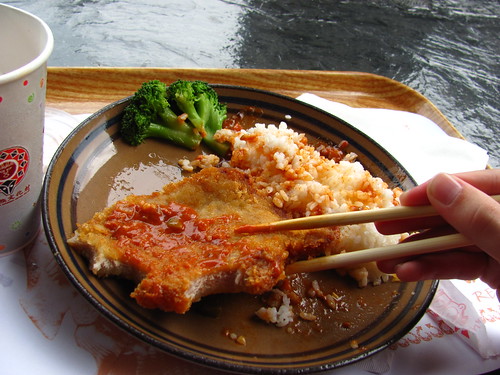 Nearby at the Naruwan Theater a cultural performance was scheduled to begin. The whole stage was surrounded by a ring of water, although they didn’t use it in this show.
Nearby at the Naruwan Theater a cultural performance was scheduled to begin. The whole stage was surrounded by a ring of water, although they didn’t use it in this show.
 The show was far from a big theme park spectacle, but it did highlight the diversity of cultural dress and practices from across Taiwan. It might have worked better in a smaller venue as the distance between performers and audience lost a bit of the energy that these practices likely have in their original settings.
The show was far from a big theme park spectacle, but it did highlight the diversity of cultural dress and practices from across Taiwan. It might have worked better in a smaller venue as the distance between performers and audience lost a bit of the energy that these practices likely have in their original settings.
The show ended them weaving this banner pattern on stage to spell out a message. What it says, I’m not sure, but I’d like to imagine: “That’s all, folks!”

 The rain was beginning to come down. The rest of the culture village side of the park consists of these winding forest trails through various tribal village recreations.
The rain was beginning to come down. The rest of the culture village side of the park consists of these winding forest trails through various tribal village recreations.
 Before I could get very far, the skies opened up with a strong downpour which forced me to take shelter in one of the huts for a few minutes.
Before I could get very far, the skies opened up with a strong downpour which forced me to take shelter in one of the huts for a few minutes.
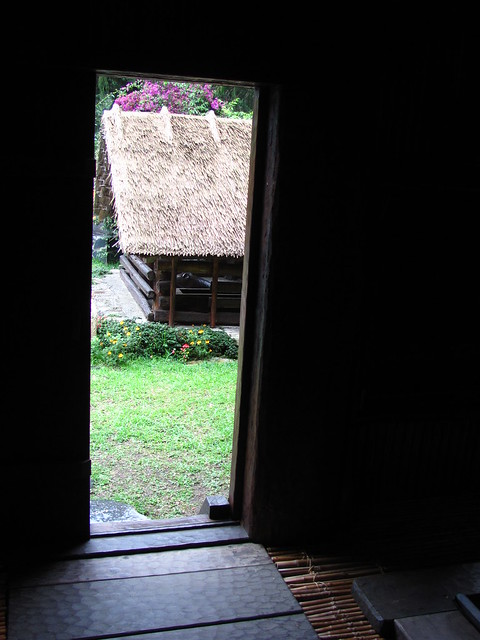


 The rain briefly subsided, so I continued my trek to the Amusement Isle side, where I knew a large indoor zone with a coaster could be found while I waited out the rest of the afternoon showers.
The rain briefly subsided, so I continued my trek to the Amusement Isle side, where I knew a large indoor zone with a coaster could be found while I waited out the rest of the afternoon showers.



 But then another rainfall caught me out in the open so I had to take shelter under a small awning with one of the cultural ambassadors.
But then another rainfall caught me out in the open so I had to take shelter under a small awning with one of the cultural ambassadors.
With only about two and a half hours left before the park closing time and I still hadn’t completed a single ride I was starting to get a bit anxious. The rain lightened up a bit and I was already a bit damp so I just decided to go for it and speed-walked in the direction of the indoor park.


 Somewhat soggier than before, I at last made it indoors.
Somewhat soggier than before, I at last made it indoors.
 As I said earlier, Formosa Aboriginal Culture Village really feels like two completely separate attractions. Once you get into the Amusement Isle area, the park abandons the Taiwanese cultural identity in favor of a randomized assortment of international theme park cliches. There’s space, dinosaurs, the wild west, pirates, jungle, and more scattered randomly both inside and out. It probably makes sense to keep the two entities thematically separate; basing a roller coaster off a tribal identity that has less than a thousand native speakers speakers left on an island that spent the better part of the last century colonizing and assimilating their people… well, clearly the roller coaster isn’t making it any better.
As I said earlier, Formosa Aboriginal Culture Village really feels like two completely separate attractions. Once you get into the Amusement Isle area, the park abandons the Taiwanese cultural identity in favor of a randomized assortment of international theme park cliches. There’s space, dinosaurs, the wild west, pirates, jungle, and more scattered randomly both inside and out. It probably makes sense to keep the two entities thematically separate; basing a roller coaster off a tribal identity that has less than a thousand native speakers speakers left on an island that spent the better part of the last century colonizing and assimilating their people… well, clearly the roller coaster isn’t making it any better.
While the outdoor sections have some decent design, the indoor section was a warehouse wasteland of mismatched and knock-off ideas. There was actually a significant amount of fairly labor-intensive murals throughout, but it was mostly painted on corrugated steel and just adds to the aesthetic mess. Rides were a pretty banal collection of flats, although it does have the park’s best roller coaster so at least there’s that.


 That coaster is the not-at-all Disney-ripoff Space Mountain.
That coaster is the not-at-all Disney-ripoff Space Mountain.
Virtually every theme park in Taiwan has a Vekoma family coaster, with themed indoor coasters being a common variation in at least two other parks. While Space Mountain was probably the originator of that trend having opened at least a year before any others in 1992, it does differ from the other parks in that it uses a Vekoma MK-700 model with inline seating instead of the more ubiquitous Roller Skater design.

 The more spacious, bobsled-style seating configuration was a nice change of pace, and the coaster itself, while not tremendously long, was still a bit better than I might have expected. I even recall a surprise pop of airtime at one or two points in the layout. I ended up riding it at least three times in a row, a better record than any of the other Vekoma family coasters I’d try in Taiwan.
The more spacious, bobsled-style seating configuration was a nice change of pace, and the coaster itself, while not tremendously long, was still a bit better than I might have expected. I even recall a surprise pop of airtime at one or two points in the layout. I ended up riding it at least three times in a row, a better record than any of the other Vekoma family coasters I’d try in Taiwan.
One other attraction within the indoor park that caught my eye was the Jurassic Cruise, a indoor boat ride past some predictably campy and low-rent scenes.
Even Legoland isn’t safe from plagiarism in this indoor park! (Also, now I wish I did a better job investigating whatever the heck “Jurassic War” was supposed to be.)
 With the skies finally clearing and the sun returning, heading back outside also revealed a marked improvement in the overall quality of the theme park, where all of the newer attractions are located. As I waited for rides to come back online following the rain, the first to open was the Gold Mine Adventure log flume.
With the skies finally clearing and the sun returning, heading back outside also revealed a marked improvement in the overall quality of the theme park, where all of the newer attractions are located. As I waited for rides to come back online following the rain, the first to open was the Gold Mine Adventure log flume.
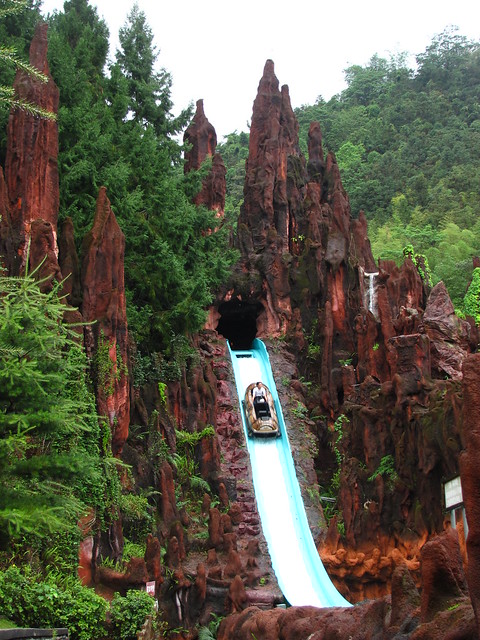
 The layout features two decent drops along with an impressively abundant series of caves. A few show scenes inside add to the charm, even if they’re rather plainly inspired by Knott’s Calico Railroad or even a few random Jungle Cruise gags. The shorter, somewhat simplified layout and lack of scenic variety through the extended cave scenes means I’d rate the Gold Mine Adventure a bit weaker than the more idiosyncratic flumes at Farglory Ocean Park and Leofoo Village, but given the increasing rarity of flume rides worldwide, Taiwan has a very respectable trifecta between these three parks.
The layout features two decent drops along with an impressively abundant series of caves. A few show scenes inside add to the charm, even if they’re rather plainly inspired by Knott’s Calico Railroad or even a few random Jungle Cruise gags. The shorter, somewhat simplified layout and lack of scenic variety through the extended cave scenes means I’d rate the Gold Mine Adventure a bit weaker than the more idiosyncratic flumes at Farglory Ocean Park and Leofoo Village, but given the increasing rarity of flume rides worldwide, Taiwan has a very respectable trifecta between these three parks.

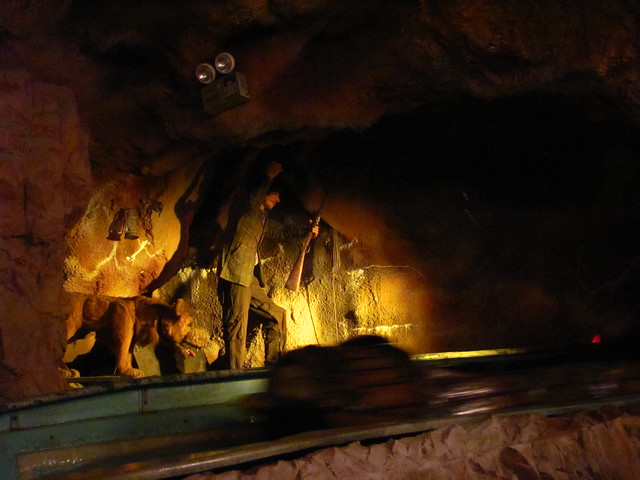
 The lighting in this picture, peering through a cave, gives the Gold Mine Adventure a rather surreal appearance.
The lighting in this picture, peering through a cave, gives the Gold Mine Adventure a rather surreal appearance.
 My third water-based attraction in a row would be Caribbean Splash, a Mack Rides SuperSplash.
My third water-based attraction in a row would be Caribbean Splash, a Mack Rides SuperSplash.
Caribbean Splash was of the park’s newest rides at the time of my visit, having opened three years prior in 2008. Since that time it’s been renamed Armada Invencible. It’s not clear the degree to which this choice of theming was intended to be self-referential to the rest of the park’s historical theme, given Taiwan’s history with European armadas. The name “Formosa” was originally “given” to the island by the Portuguese traders, and it stuck for the better part of 400 years… eventually becoming the name of a theme park in central Taiwan.


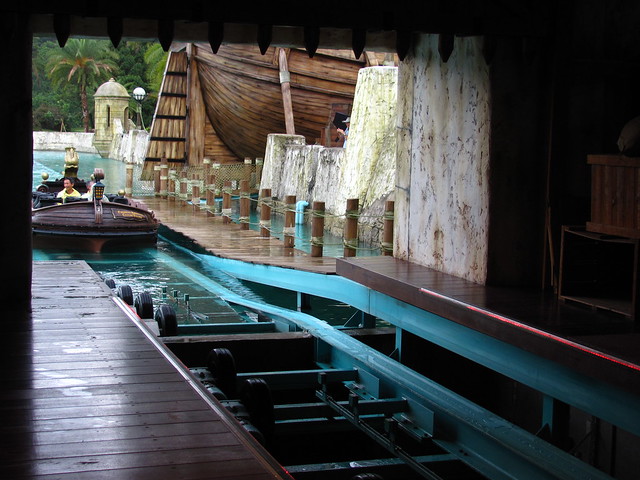 The combination roller coaster and water ride designation makes it sound a lot more interesting than it really is.
The combination roller coaster and water ride designation makes it sound a lot more interesting than it really is.
In reality it’s just an updated, supersized version of the simple shoot-the-chutes flume rides that can be found at many theme parks. There turntables and reverse coaster drop could be interesting if set within an Escape From Pompeii-style dark ride building, but out in the open it’s only just vamping for the big splashdown.
I was just starting to dry off from the earlier rainstorm, so I wasn’t exactly thrilled to be doing yet another water ride. At least it wasn’t nearly as soaking as the traditional shoot-the-chute versions usually are. Still, if water rides are your thing, the Gold Mine Adventure is easily the better experience.
 Wandering through some Mayan ruins, I was on the hunt for my final coaster of the day.
Wandering through some Mayan ruins, I was on the hunt for my final coaster of the day.

 There it is, the Mayan Adventure. Sure it’s a Vekoma SLC, but I haven’t gotten to ride a full-fledged thrill ride since Screaming Condor at the beginning of my Taiwan trip a full week ago, so at this point I’ll take what I can get. Plus the heavy theming around it scores it some extra points. The only problem is, while the ride appeared to be open and operating, the main entrance appeared to have a detour.
There it is, the Mayan Adventure. Sure it’s a Vekoma SLC, but I haven’t gotten to ride a full-fledged thrill ride since Screaming Condor at the beginning of my Taiwan trip a full week ago, so at this point I’ll take what I can get. Plus the heavy theming around it scores it some extra points. The only problem is, while the ride appeared to be open and operating, the main entrance appeared to have a detour.
I could see the station, but with all the theming around it I couldn’t trace back where the queue originated from. So I wandered around, underneath, and inside the ride, hoping to find the way in. It was nowhere to be found.
This looked promising, but it was actually for a food location.
Seriously, what was going on today? First I was hopelessly lost finding the bus to the theme park, and now I was hopelessly lost trying to find the entrance to a roller coaster!
I finally found a small path that appeared to lead to the station. The signs were all in Chinese so I couldn’t tell what it was for. Getting to the top, I discovered it was in fact the ride exit. Even more confounding, there were several guests boarding the ride from the loading side of the platform. HOW DID THEY GET THERE?!? Fortunately it wasn’t busy and the ride attendants, chuckling at this clearly confused foreigner, happily waved me in to pick an open seat. (If I recall, I think I later solved the mystery of the missing entrance on my second ride at the end of the day, but I can’t exactly remember what the solution was.)
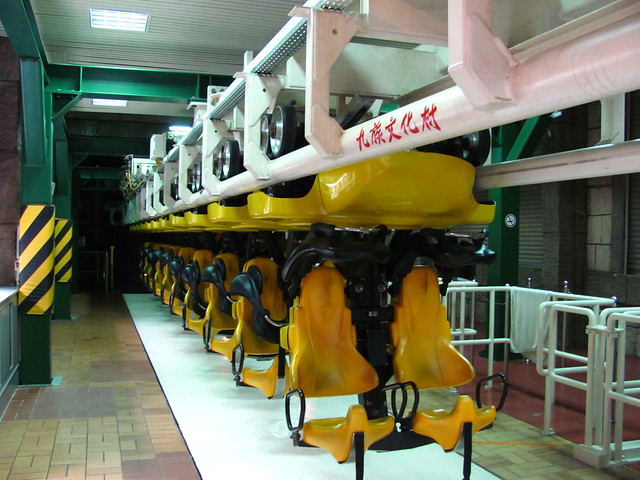 Mayan Adventure was much like every other SLC, just with the addition of a bit more scenery around it. The SLC is in principle a good layout but this one was on the rougher end of the spectrum. Even if I had more time with my day, I’m not sure if I would have utilized it getting more than two laps on this one.
Mayan Adventure was much like every other SLC, just with the addition of a bit more scenery around it. The SLC is in principle a good layout but this one was on the rougher end of the spectrum. Even if I had more time with my day, I’m not sure if I would have utilized it getting more than two laps on this one.
The most significant change was the addition of a tunnel over the brake run and helix between the sidewinder and barrel rolls. It’s a nice add but I don’t think it was designed with regular cleaning and maintenance in mind; it seemed very damp inside and reeked as if something had died in there. One of my first Smell-O-Coasters.
 Perhaps more interesting than the ride itself, along the exit area is a small Mayan archeological exhibit featuring some mighty well-endowed sculptures. Now the erotic art IS the the theme of the Vekoma SLC!
Perhaps more interesting than the ride itself, along the exit area is a small Mayan archeological exhibit featuring some mighty well-endowed sculptures. Now the erotic art IS the the theme of the Vekoma SLC!
Leaving the Mayan ruins behind through an archway, I next encounter something far more unexpected, looking like a futuristic postmodern Mayan-revival fever dream.


 This is UFO, the park’s custom-themed Intamin Gyro Drop Tower, standing a respectable 280 feet high as Taiwan’s tallest thrill ride.
This is UFO, the park’s custom-themed Intamin Gyro Drop Tower, standing a respectable 280 feet high as Taiwan’s tallest thrill ride.
I find most drop towers to be overrated. It’s a lot of build-up just a couple seconds of payoff, and I’ve been on enough of them that the suspense doesn’t really affect me anymore. Basically just open-air observation towers with an abrupt ending. While the same applied to the on-ride experience here, off-ride the deliriously over-the-top design made it possibly the best thing in the park.
I mean, the catch mechanism is decorated a giant flying saucer that lifts you into space before dropping you back to earth. That’s the coolest drop tower theme I’ve ever seen. How is a ride like this at the same park as the Jurassic Cruise ride?
Nearby was a smaller attraction called Space Race. I believe this might have been a motion simulator of some kind. I honestly can’t remember if I tried this or not, but if I did it obviously didn’t leave much of an impression.
 Despite my late start and a few rain delays, I made pretty good time with my visit to Formosan Aboriginal Culture Village. While I could have gone back for more rerides with the last few minutes of the day, I opted instead to give one of the other remaining outdoor attractions a try: Love Boat.
Despite my late start and a few rain delays, I made pretty good time with my visit to Formosan Aboriginal Culture Village. While I could have gone back for more rerides with the last few minutes of the day, I opted instead to give one of the other remaining outdoor attractions a try: Love Boat.
I’m not exactly sure what earned it the name of the Love Boat, but this tranquil raft ride though a botanical garden at least looked attractive and offered a contemplative end to the day, even if there was virtually nothing in the way of theming, story, or excitement.


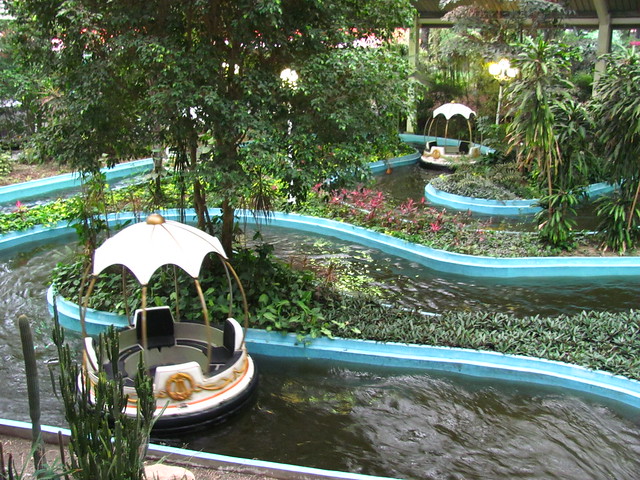
 I earlier stated that Formosan Aboriginal Culture Village felt like two completely separate attractions, but that’s not quite accurate. It’s really three. At the furthest end of the park nearer to the parking lot is a large European Garden section. I spent a few minutes to wander as the park was closing before I had to head to the bus pick-up nearby. The quality of the landscaping was indeed top-notch, and had I more time I would have enjoyed exploring more and discovering what was inside the large building at the far end.
I earlier stated that Formosan Aboriginal Culture Village felt like two completely separate attractions, but that’s not quite accurate. It’s really three. At the furthest end of the park nearer to the parking lot is a large European Garden section. I spent a few minutes to wander as the park was closing before I had to head to the bus pick-up nearby. The quality of the landscaping was indeed top-notch, and had I more time I would have enjoyed exploring more and discovering what was inside the large building at the far end.



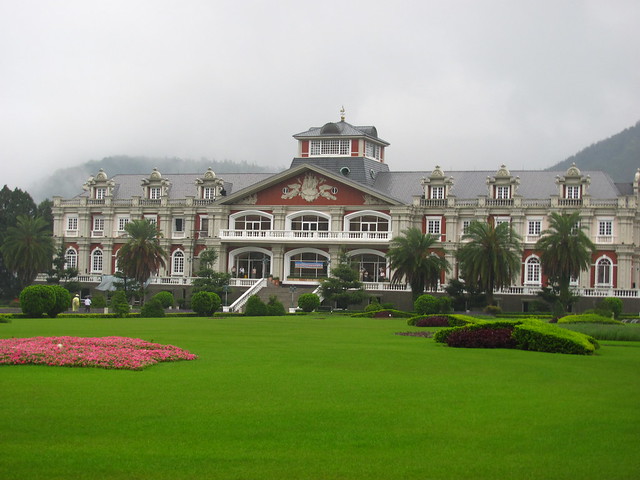 However, I also had to wonder exactly who the target audience for this garden was for? Certainly not the thrill-seekers or families with young children drawn to the amusement rides a few hundred yards away? Maybe the cultural tourists drawn to the aboriginal villages, although placing a symbol of European colonialism nearby feels a bit off the mark.
However, I also had to wonder exactly who the target audience for this garden was for? Certainly not the thrill-seekers or families with young children drawn to the amusement rides a few hundred yards away? Maybe the cultural tourists drawn to the aboriginal villages, although placing a symbol of European colonialism nearby feels a bit off the mark.
Formosan Aboriginal Culture Village wants to be many different things to many different people. I’m not sure if I’ve ever visited a theme park that feels torn between so many conflicting directions. In a way that makes a visit here more engaging, especially if you’re on a coaster tour of Taiwan and eager to try something a bit different from a standard theme or amusement park. But it also makes it hard to distill what the park’s core mission statement is, and where their values truly lay.
Portraying indigenous people and cultures, especially those that have historically faced oppression by colonizing forces as the indigenous tribes of Taiwan have, is always a challenging subject, especially in a themed entertainment context. I won’t pretend that I’m knowledgeable enough to give a thorough or nuanced evaluation of their representation here, but the fact that the culture village seemed a bit tired and outdated and all the new money seems spent on some thematically unrelated amusement rides does make me worry that the balance is tipping away from representation and towards appropriation or even exploitation.
As it stands, I’d rate Formosan Aboriginal Culture Village near the lower-middle of the pack of Taiwanese theme parks, if only because the ride collection is still decidedly middling despite the obvious investment put in. Perhaps I’m over-thinking it, and all it really needs is a rebranding and some connective tissue between the disparate parts, as well as top-to-bottom renovation of the indoor ride park.
A high-quality coaster wouldn’t hurt either. It’s been a while since I’ve ridden one of those. Maybe tomorrow…













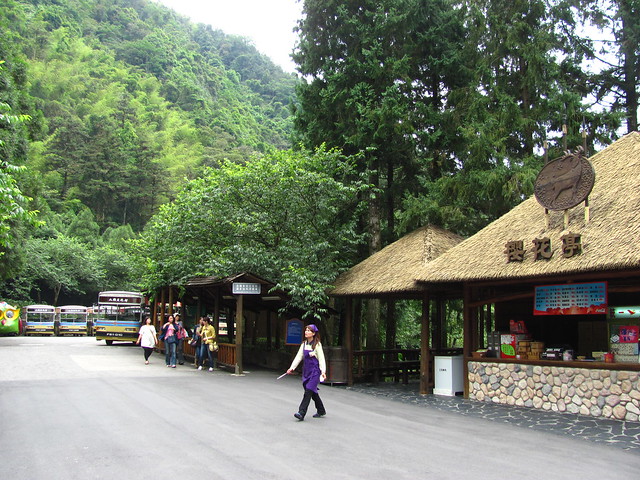





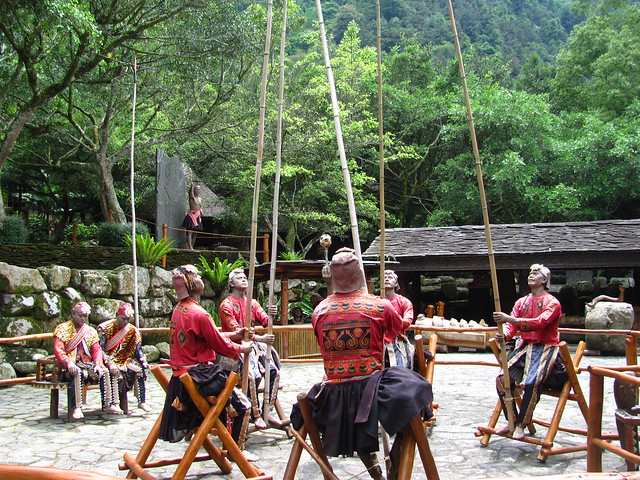



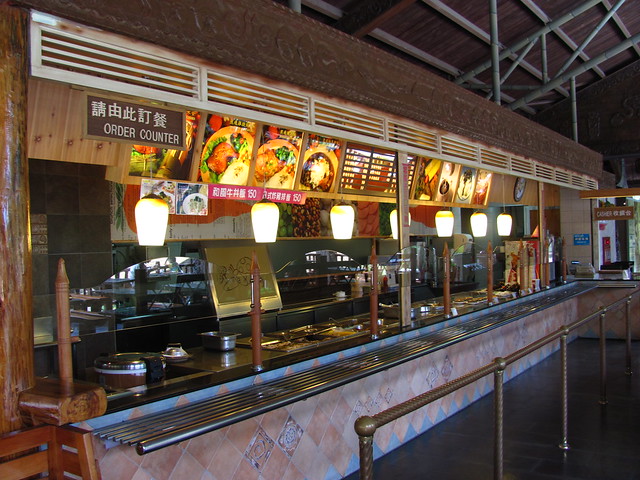















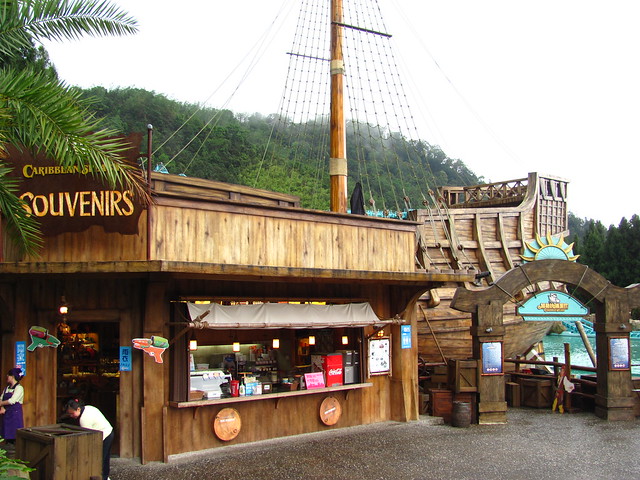


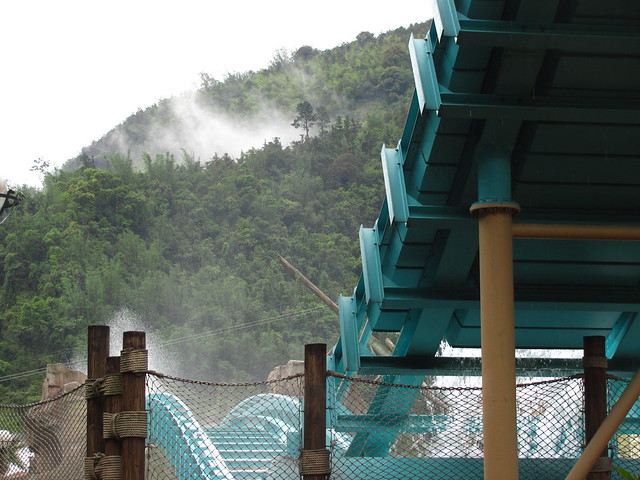






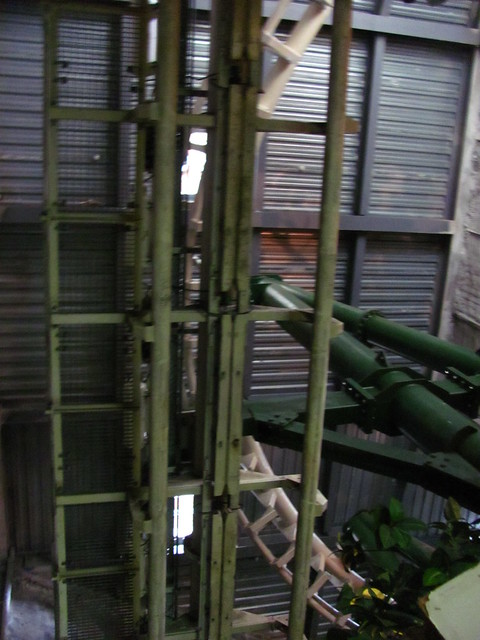












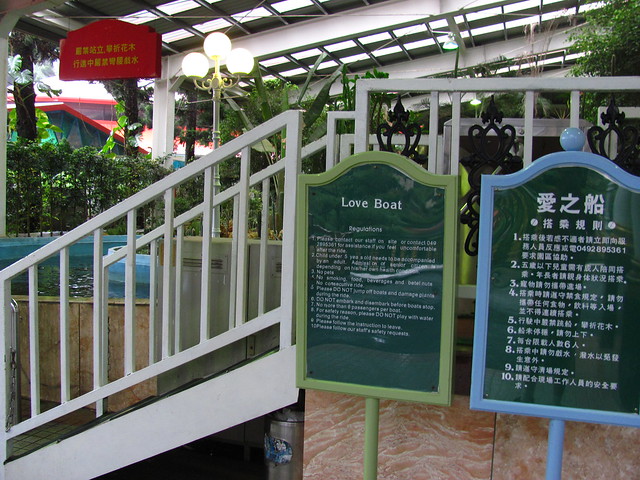

Comments